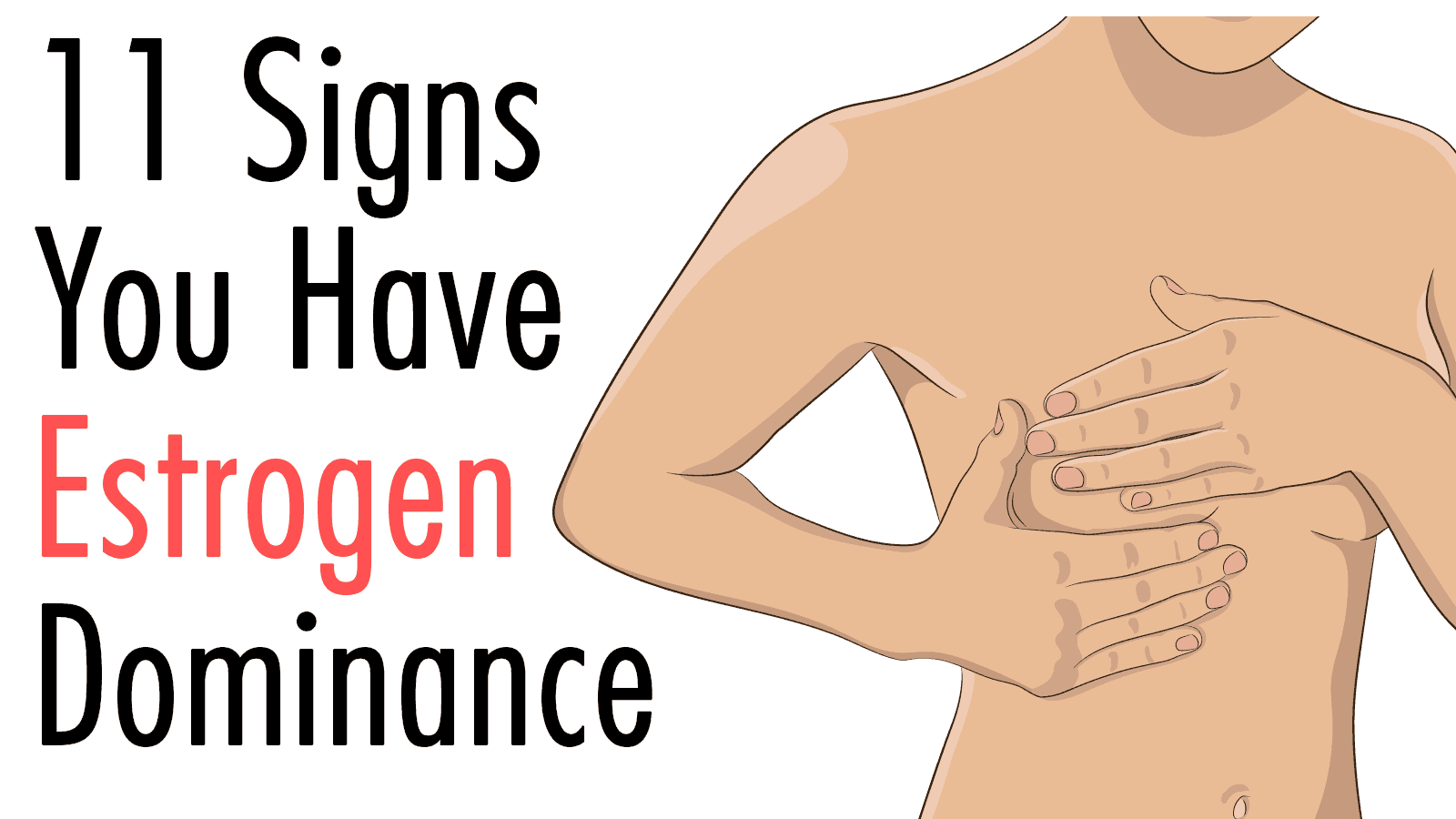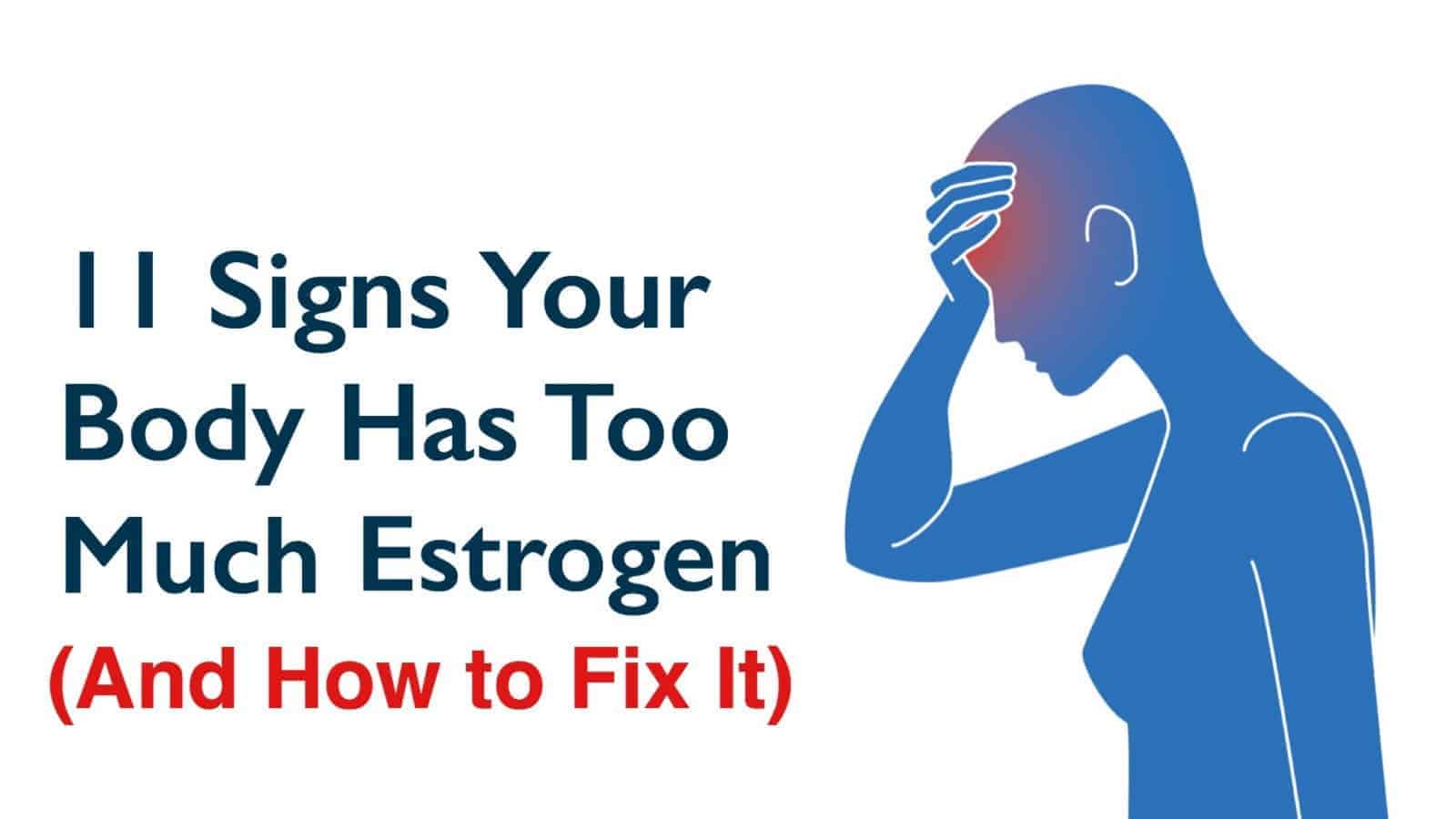What is Estrogen dominance?
Our hormones control nearly every function within the body. As such, we need a balanced hormonal system if we want good health. Simply, you can think of hormones as tiny chemical messengers that relay bits of information between cells, organs, and system. Hormones also influence how we interpret and experience emotions. So they significantly impact our behavior. A normal hormonal system aids in brain health and cognitive functioning.
Both sexes possess these three hormones: estrogen, progesterone, and testosterone. Here’s a bit of info on each type of hormone:
Estrogen: With much higher concentrations in women, this hormone is responsible for the development and growth of “female secondary sexual characteristics.” These include the breasts, and also the hair that grows in the armpits and pubic region. Estrogen enables ovulation and fertilization, as well as regulates period cycles and the reproductive system. At abnormal levels, estrogen can be the catalyst for a variety of health conditions.
Progesterone: Considered a female sex hormone, progesterone prepares the body for conception and pregnancy. It also influences female sex drive and is considered a precursor to the sex hormones testosterone and estrogen. This hormone regulates the menstrual cycle and is thought to help protect against breast cancer.
Testosterone: The dominant male sex hormone, females produce about 90 percent less testosterone than men. This hormone is vital to bone and muscle strength, sex drive, and overall energy levels. It also influences cognitive functioning and mood.
Estrogen Dominance and Signs
“Benign breast disease, breast cancer and pre-cancerous conditions have been found to be associated with a progesterone deficiency and estrogen excess.” – Ray Peat, Ph.D.
To accurately transcribe what estrogen dominance is, a bit of background knowledge should help. Female hormones work in a beautiful, intelligent synchrony that permits the body to function optimally. This synchronization requires a delicate balancing act between all hormones, especially that of estrogen, progesterone, and testosterone.
When the ratio of hormones involved in this “balancing act” is disturbed – by poor diet or too much stress, for example – it can carry serious health implications. One such instance is estrogen dominance, which occurs when estrogen levels are disproportionately high (to progesterone levels, usually.)
11 Signs of Estrogen Dominance
1. Breast sensitivity
The presence of estrogen causes the ducts of the breast to swell. This sign is prevalent during menopause and may manifest as symptoms of swelling and tenderness.
2. Edema
Edema is the abnormal accumulation of fluid in tissues of the body. It is most apparent when present in the legs – a condition called peripheral edema.
3. Abnormal blood flow during periods
As mentioned, estrogen – as a primary role – regulates the body’s processes during menstruation. When the hormone is out of whack, a woman may experience irregular blood flow. Sometimes this imbalance may lead to a “missed” period.
4. Sleep disturbances
Estrogen dominance is thought to make women more susceptible and sensitive to internal and external stressors. As a result, sleep disturbance and even insomnia may surface.
5. Infertility
Estrogen is responsible for fertilization and ovulation, and when present in excess can prevent both. In many cases, estrogen dominance must be rectified to allow conception.
6. Depression and/or mood swings
Estrogen, a key hormone, has effects that extend to the brain. The dominance of any primary hormone affects mood and cognition – and may lead to anxious or depressive feelings.
7. Irregular period onset and skipped cycles
We’ve covered this point: normal estrogen levels encourages reproductive health, and this also includes menstruation. Estrogen dominance suppresses the vital functions of progesterone during periods.
8. Vaginal dryness and itchiness
Among its numerous duties, estrogen also lubricates the vaginal wall and promotes health in this region.
9. Varicose veins
Both estrogen and progesterone expand the female blood vessels. When deficient in either hormone, veins may constrict and expand, producing varicose (or “spider”) veins.
10. Weight gain
A specific type of estrogen, estradiol, assists in the regulation of metabolism. Consequently, an excess of this can lead to weight gain. Weight gain is one of the most apparent signs of estrogen dominance, especially during menopause.
11. Breast cancer and breast disease
Sadly, estrogen dominance has a relationship with breast cancer. The breast contains cells that act as receptors to estrogen (and progesterone). Excess estrogen levels may link to at least one type of breast cancer.
Prevention and Treatment
Natural treatment of low estrogen levels may be the best option. The plan described below also serves as a preventative measure.
Here are a few ways that you can treat and prevent estrogen dominance:
1) Address any mineral deficiencies, particularly calcium, copper, magnesium, potassium, and zinc.
2) Cut back on saturated fats.
3) Take an Epsom salt bath because Epsom salt contains a bunch of magnesium (great for the hormones).
4) Eliminate any and all unnecessary stressors.
5) Support your liver by consuming more protein (to 20 to 25 percent of your total calorie intake).
6) Cut back on processed foods.
7) Leave the sugar ALONE.(!)
8) Drink a minimum of 64 ounces of water per day.
9) Get at least 30 minutes of regular exercise daily.
10) Eat more carrots – because they have been found to lower estrogen levels and relieve premenstrual symptoms.
https://youtu.be/klnkeaa3pZw
















